Cyber Monday Special Limited Time 70% Discount Offer - Ends in 0d 00h 00m 00s - Coupon code = getmirror
Pass the Fortinet NSE 7 Network Security Architect NSE7_SDW-7.2 Questions and answers with ExamsMirror
Exam NSE7_SDW-7.2 Premium Access
View all detail and faqs for the NSE7_SDW-7.2 exam
576 Students Passed
84% Average Score
95% Same Questions
Refer to the Exhibits:
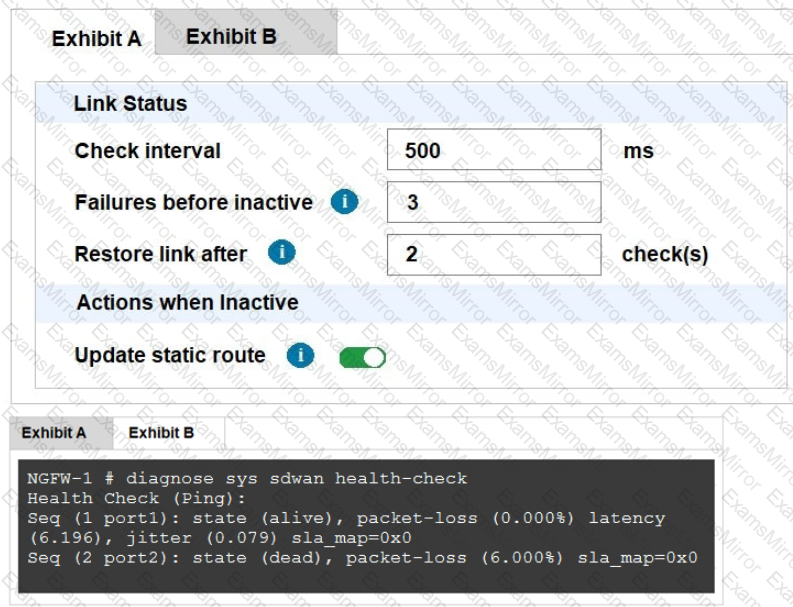
Exhibit A, which shows the SD-WAN performance SLA and exhibit B shows the health of the participating SD-WAN members.
Based on the exhibits, which statement is correct?
Which best describes the SD-WAN traffic shaping mode that bases itself on a percentage of available bandwidth?
Refer to the exhibits.
Exhibit A -
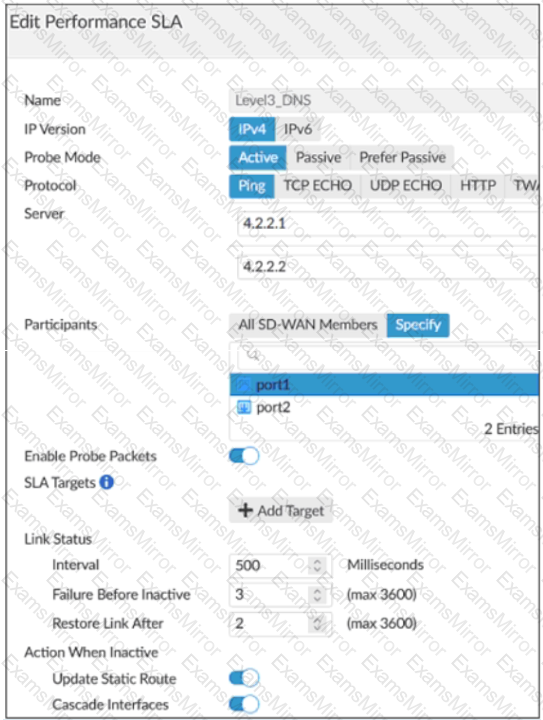
Exhibit B -
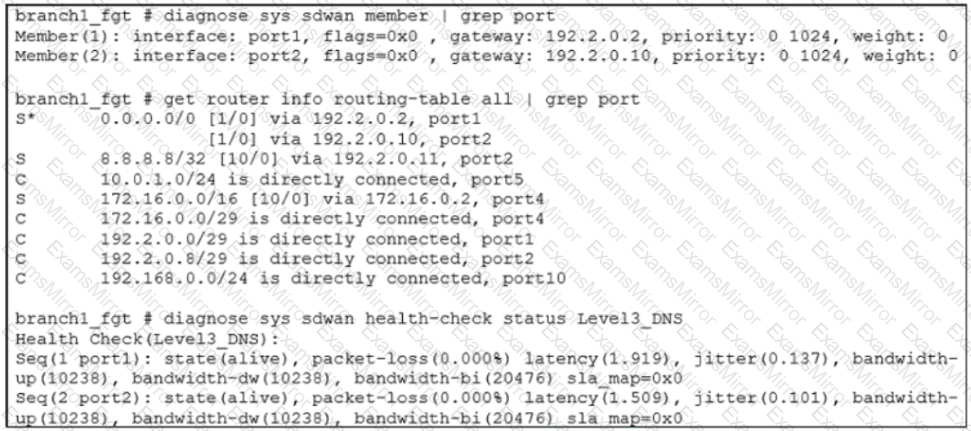
Exhibit A shows the SD-WAN performance SLA and exhibit B shows the SD-WAN member status, the routing table, and the performance SLA status.
If port2 is detected dead by FortiGate, what is the expected behavior?
What are two benefits of using the Internet service database (ISDB) in an SD-WAN rule? (Choose two.)
What three characteristics apply to provisioning templates available on FortiManager? (Choose three.)
Which action fortigate performs on the traffic that is subject to a per-IP traffic shaper of 10 Mbps?
Which two statements are correct when traffic matches the implicit SD-WAN rule? (Choose two.)
Refer to the exhibit.
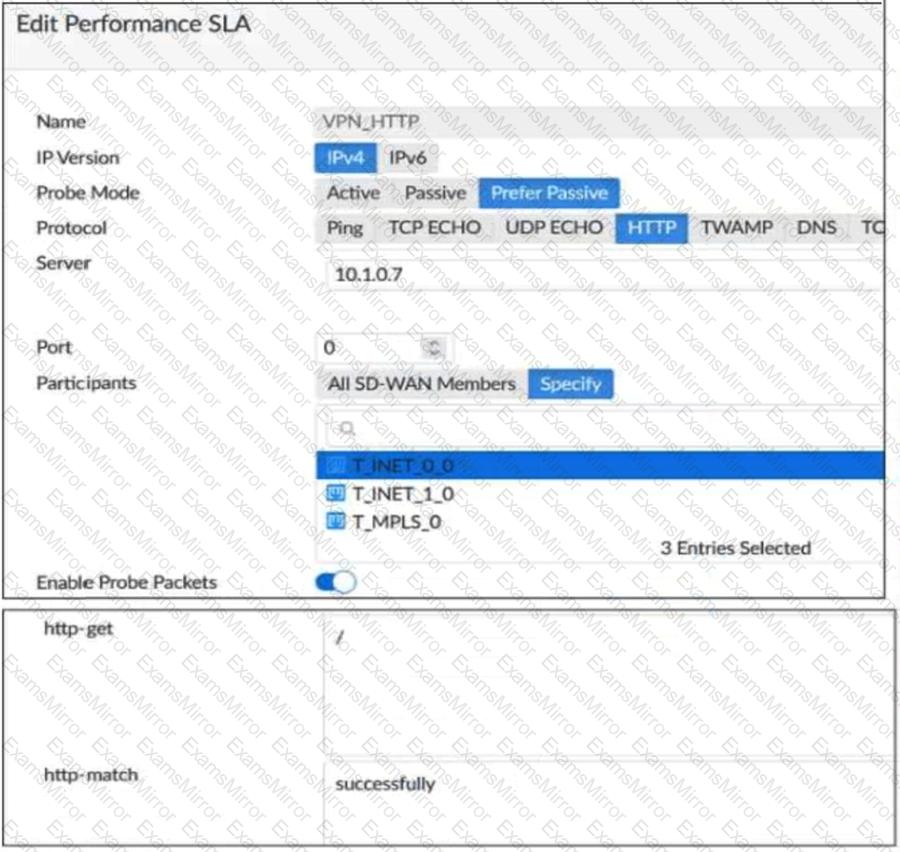
Based on the exhibit, which two statements are correct about the health of the selected members? (Choose two.)
Refer to the exhibit.
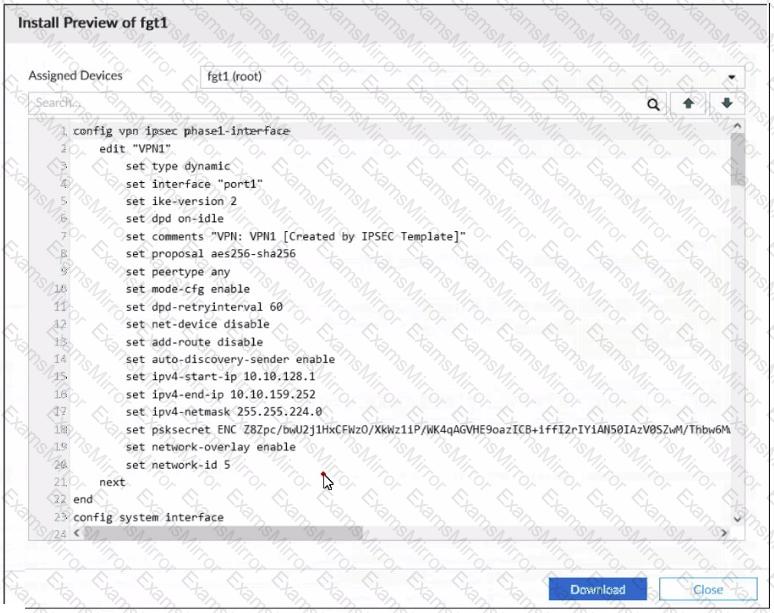
An administrator used the SD-WAN overlay template to prepare an IPsec configuration for a hub-and-spoke SD-WAN topology. The exhibit shows the installation preview for one FortiGate device. In the exhibit, which statement best describes the configuration applied to the FortiGate device?
In the default SD-WAN minimum configuration, which two statements are correct when traffic matches the default implicit SD-WAN rule? (Choose two )
TOP CODES
Top selling exam codes in the certification world, popular, in demand and updated to help you pass on the first try.
